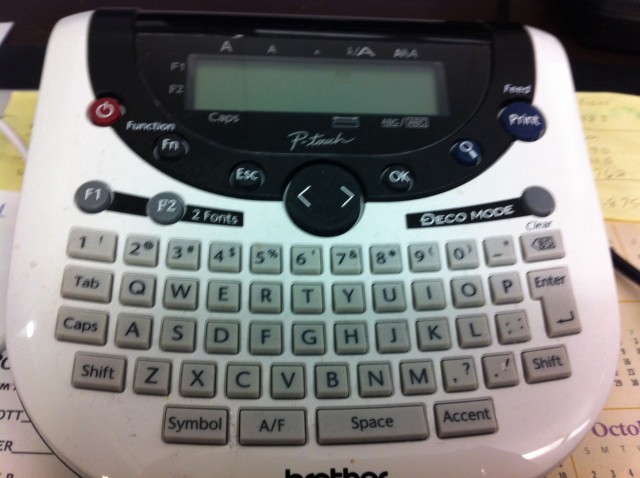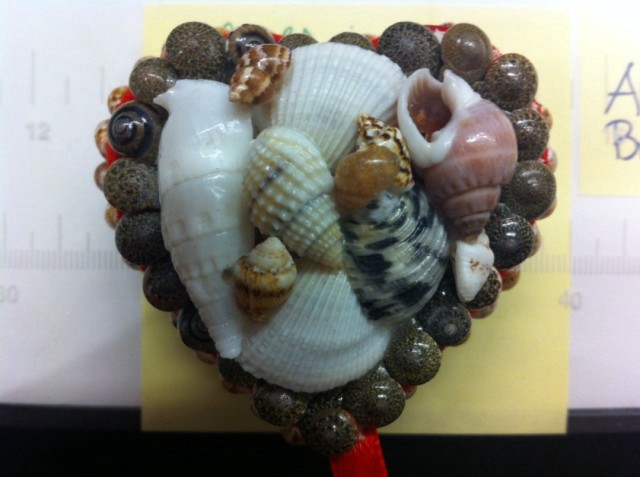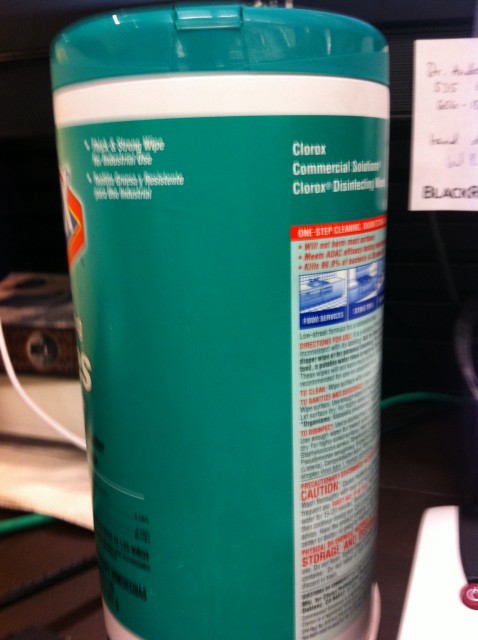Excavating a 21st-Century Working-Class Female’s Workplace
by Rebecca Jane Stokes

“And now, you will read this narrative without any view of inserting it in your history, of which it is not in the least worthy; and indeed you must put it down to your own request if it should appear not worth even the trouble of a letter”
— Pliny the Younger, on the destruction of Pompeii
EXHIBIT ONE: The upper echelons of this financially minded community were provided with access to the modern equivalent of the ‘super computer.’ But the working classes, permanently indentured servants1, conducted their work upon this smaller device. Hunched backs and poor eyesight were only a handful of the ailments it caused. The device issued forth a thin, laminated ream of paper, commonly traded for dry goods, tinctures, and monthly visits to the less prestigious pleasure houses.
1 Archibald Spaulding, ‘On The Masses’, Pub. Hop Bravely & Moynihan, 3022 AD, pages 86–87 -’easily identified by the neutral tones, synthetic fabrics and telling pairing of hosiery with athletic footwear, mandatory dictums issued by their higher-ups.’

EXHIBIT TWO: The working class female ate a drastically different diet from others in her community2, even within her own class. While her male counterparts lunched on meals comprised of quail and lower calorie discount inebriates, during the daylight hours the female limited herself to imbibing liquid meals comprised of finely ground cow bones and cocoa powder. These medicinals were then blended with a carbonated, Aspartame-based solution. The blending took place in a transparent mixing vessel which doubled as drinking container. These “shakes” were costly investments for the females, as even weekly allotments procured from the local apothecary could cost them a month’s worth of laminated tape. Curiously, this meal seems to have been more symbolic than practical, as recent research also shows that during the nighttime hours the female could consume as many as “all of the cakes that there are.” 3
2 Titus Harken, ‘I Couldn’t Eat Another Bite: Diet, Poverty, And Self-Esteem in the 21st Century’, Pub. Tickles & Sons, 3014 AD, Page 10: “Demurral, denial, and self-deprecation were more than status-quo among certain women of the 21st century. To partake in popular confectionary offerings of the day was to invite ritualized hazing, not limited to beating, severing of digits, and burning of the central orifices.”
3 ‘Journal of an Unidentified Lower Class Female:2012’, Shale Carnivale, Editor, Pub. Lincolnshire Bacon Press, 3020 AD, Page 706.

EXHIBIT THREE: Curios such as this small “heart-shaped” box were often exchanged among working class females to mark special ceremonial occasions. These included the day commemorating the anniversary of one’s birth, the resurrection of Santa Claus, and the monthly onset of menses. Although the boxes were typically small and plain, the more ornate boxes served dual purposes: the aforementioned socially constructed notion of the giving of expected gifts on proscribed occasions, and the symbolic assertion of superiority within the caste.4 Ostensibly useless, gifts of this nature were often the defining feature of the lower class female’s workplace. Displayed on her desk, they ultimately served as a way of marking both the amount of time each woman had spent in a given company’s employ and her position in the intrapersonal strata of professional life.
4 Leonine Ned, ‘Miami, Maui, But Never Prague: Vacation Days in Ancient Times’, Pub. Saratoga Interruption Inc., 3001 AD, Pg. 101 “ It is believed the famous Shell Heart Box discovered at the Manhattan excavation is covered with the leavings from an expensive seafood dinner the giver had been taken to by a well-to-do sexual partner or potential partner. The message is clear: ‘I give you this gift, but also call into question your desirability and ability to procreate successfully while reminding you that these are not concerns I share’ A stunning display of mental calisthenics.”

EXHIBIT FOUR: Although the great internet fire of 20135 destroyed most records, the media that remains point to a burgeoning global vampirism epidemic whose central locus was the United States. Working class females seem to have been the individuals most likely to be stricken with this illness. To prevent infection, most used some form of the disposable cleaning rag, which is likely what was contained in the recently excavated cylinder. While also used to prevent person-to-person bacterial contamination, the central ingredient, ‘bleach,’ was revered, its powers summoned through an incantation whose meaning has since become lost.6 It was said to contain ‘majical’ powers, believed to prevent attacks from the undead.
5 Woodward Clemence, ‘Let It Burn: Fueling The Fire: Pearls Before Swine: Burnin’ Down The Web’ Pub. Pope Frank Publications, 3099, Page 70 “And verily was each FTP destroyed in a searing blue flame. No LOLS survived.”
6 Jolie Kerr, ‘Ask A Clean Person’, 2012, “❤ u bleachie”
Previously: The History of the Cell Phone.
Rebecca Jane Stokes is a writer living in Brooklyn. She’s an editor at Fempop, and spends a large amount of her time pretending to be a mildly evil cat on the internet.